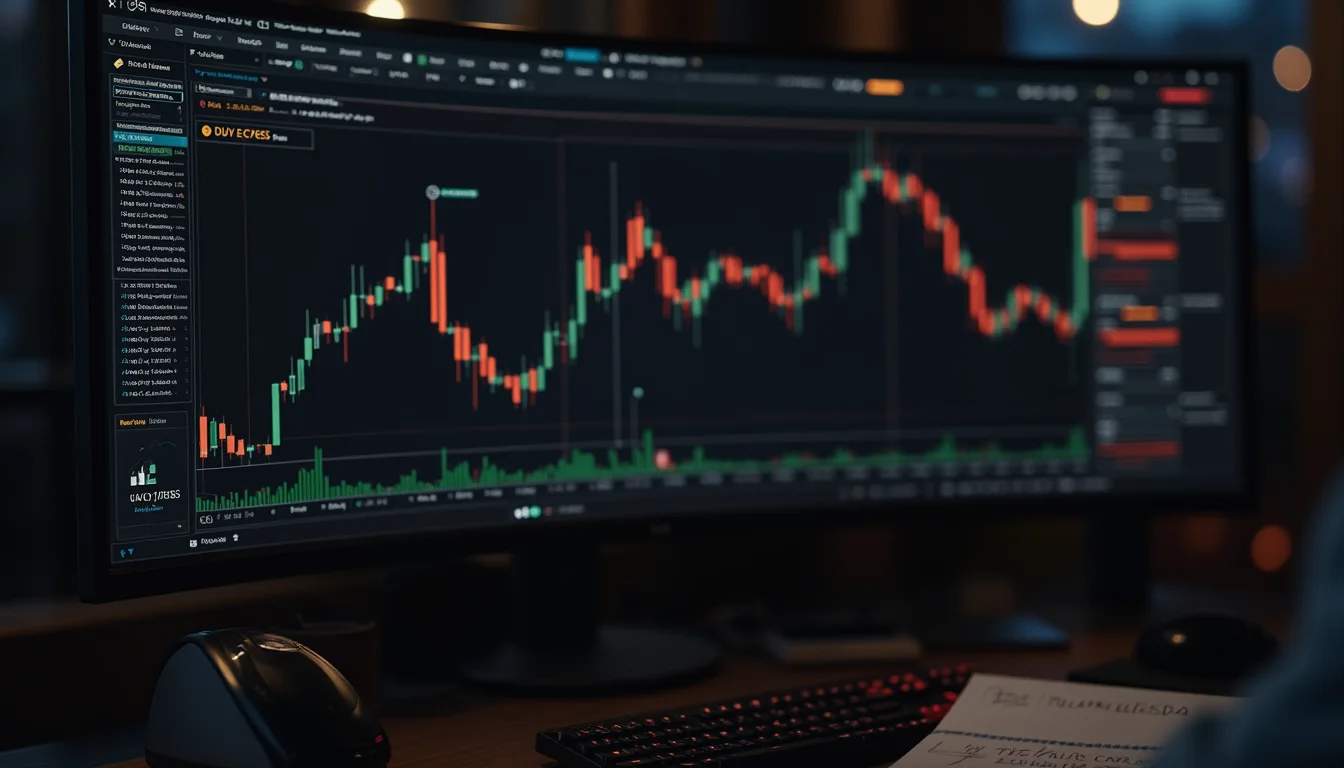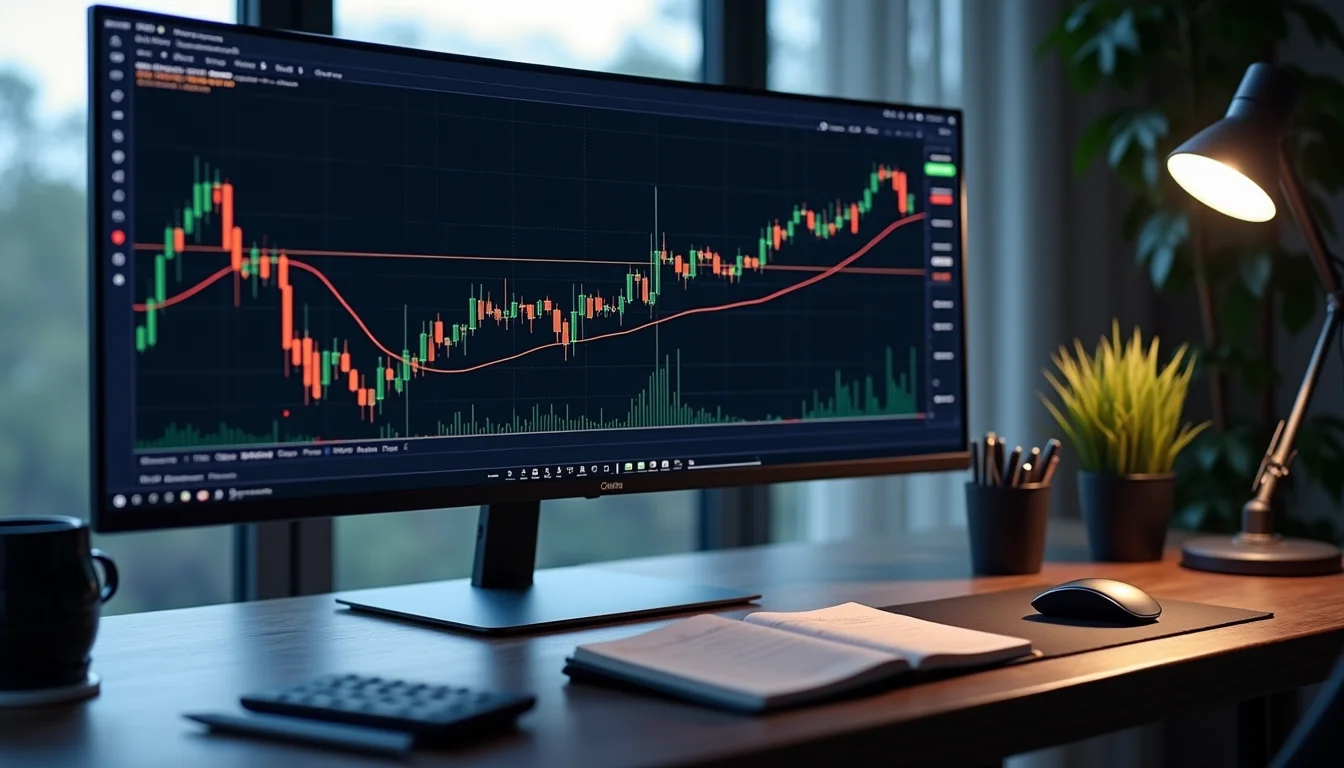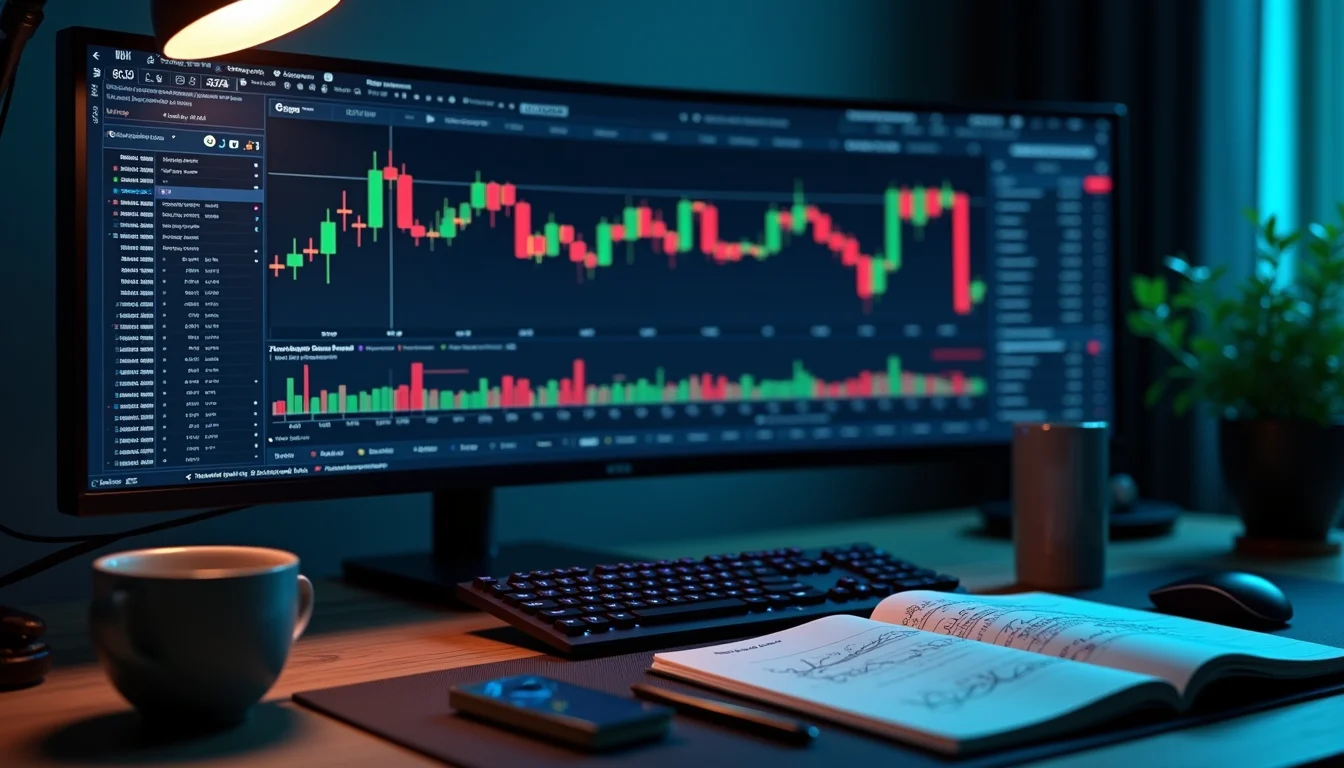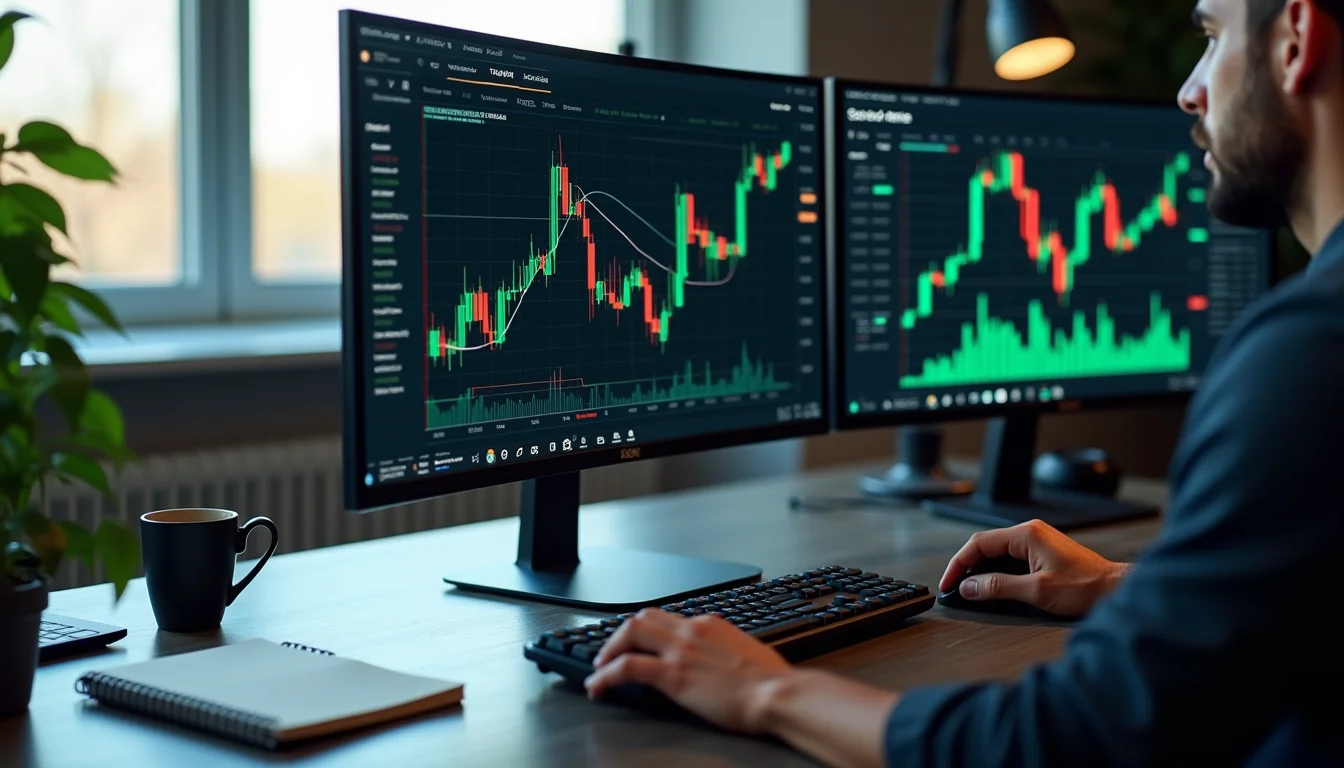Introduction
Remember the first time you looked at a forex chart? All those candlesticks dancing across the screen, economic news flashing on your feed, and that nagging question: how do I actually make money from this? I certainly do. Back in 2015, I sat staring at EUR/USD movements, convinced I'd found the secret pattern—only to watch my account bleed 15% in two weeks. That painful lesson taught me what really matters in learning how to forex trading: it's not about finding magical indicators, but about developing a systematic approach that works consistently.
Over the past eight years trading professionally, I've discovered that successful forex trading boils down to mastering a few core principles and applying them with discipline. Whether you're completely new to currencies or have some experience but want more consistency, this guide will walk you through exactly how to forex trading the right way. We'll cover everything from reading price action to managing risk, with real examples from my own trading journal.
By the time you finish reading, you'll understand how to develop your own trading plan, avoid common beginner mistakes, and build the foundation for long-term profitability. The journey to mastering how to forex trading begins with accepting one simple truth: there are no shortcuts, but there are proven paths that work.
Understanding the Forex Market Structure
Before we dive into strategies, let's get clear on what we're actually trading. Many beginners jump into forex without understanding the basic market mechanics—and that's like trying to drive without knowing what the pedals do.
Major Currency Pairs and Their Characteristics
The forex market trades currency pairs, and not all pairs behave the same way. In my experience, beginners should focus on the majors initially because they offer the best liquidity and tightest spreads. Here are the pairs I trade most frequently:
- EUR/USD - The most traded pair globally, typically moves 70-120 pips daily
- GBP/USD - More volatile than EUR/USD, can move 100-150 pips on normal days
- USD/JPY - Heavily influenced by Bank of Japan interventions and US Treasury yields
- USD/CAD - Correlated with oil prices due to Canada's energy exports
I remember specifically trading GBP/USD during the Brexit negotiations in 2019. The pair would regularly swing 200+ pips during key announcements. Understanding that GBP pairs tend to be more volatile helped me adjust my position sizing accordingly—I traded half my normal size to account for the increased risk.
Market Sessions and Optimal Trading Times
Forex markets operate 24 hours, but not all hours are created equal. The overlap between London and New York sessions (8:00 AM - 12:00 PM EST) typically sees the highest volume and best trading opportunities. During Asian session, I've found pairs like AUD/USD and NZD/USD often provide cleaner setups.
When I was building my trading foundation, I tracked my results across different sessions and discovered that 75% of my profitable trades came during London and New York overlaps. The remaining 25% were split between Asian session and other times. This data helped me focus my trading hours where I had the edge.
Developing Your Trading Plan
A trading plan isn't just a document—it's your business blueprint. I've seen too many traders jump between strategies without a clear plan, and the results are always the same: confusion and losses.
Defining Your Trading Style
Your personality should determine your trading style, not the other way around. Are you patient enough to hold positions for weeks? Then swing trading might suit you. Do you prefer quick decisions and constant action? Scalping could be your fit. Here's how I approached this decision early in my career:
- Test different timeframes - I spent two weeks each trading M15, H1, H4 and daily charts
- Track performance and comfort level - I found H4 charts gave me the best balance of signal quality and not staring at screens all day
- Match strategy to personality - As someone who prefers analysis over quick reactions, swing trading fit me perfectly
Creating Your Entry and Exit Rules
Vague rules lead to emotional trading. Your plan needs specific, testable criteria for entering and exiting trades. For my swing trading strategy, here are the exact rules I follow:
- Only trade in direction of H4 trend (confirmed by EMA alignment)
- Enter on H1 chart pullback to key support/resistance
- Risk maximum 1.5% per trade
- Take profit at nearest swing high/low with minimum 1:2 risk-reward
Last month, this approach helped me capture a 280-pip move on EUR/USD. The pair was in an uptrend on H4, pulled back to the 50-period EMA on H1, and I entered with a stop below the recent swing low. The trade ran for three days and hit my take profit level exactly.
Essential Technical Analysis Tools
While there are hundreds of indicators available, I've found that simplicity works best. After testing countless tools, I rely on just a handful that actually improve my decision-making.
Price Action and Support/Resistance
Nothing beats clean price action analysis. Learning to read candlestick patterns and identify key levels will do more for your trading than any fancy indicator. I start every analysis session by marking recent swing highs and lows on my charts. These levels often become self-fulfilling prophecies as other traders watch the same areas.
For example, when USD/JPY approached the 150.00 psychological level last October, the price reacted exactly at 149.85—just 15 pips shy of the big round number. I took a short position with a stop above 150.15 and caught a 180-pip move down. The market remembered that 150.00 had been a battleground before.
Moving Averages and Momentum Indicators
I use two simple moving averages (20 and 50 period) to gauge trend direction and strength. When both are aligned and price trades above them, I only look for long setups. The opposite for downtrends. For momentum, I've found the RSI works well for identifying overbought/oversold conditions within trends.
My TradeMaster Pro Strategy actually builds on these concepts with some custom filters I've developed over years of testing. The key is consistency—once you find tools that work, stick with them and learn their nuances.
Risk Management: The Make-or-Break Factor
I can't stress this enough: proper risk management separates professional traders from gambling amateurs. The best strategy in the world will fail without disciplined risk control.
Position Sizing and Leverage
Never risk more than 1-2% of your account on a single trade. This sounds simple, but most beginners ignore it until they learn the hard way. Here's my exact position sizing formula:
Position size = (Account balance × Risk percentage) ÷ (Entry price - Stop loss price)
If I have a $10,000 account and want to risk 1.5% ($150) on a EUR/USD trade with a 30-pip stop loss, my position size would be $150 ÷ 0.0030 = 50,000 units (0.5 lots). This calculation ensures I never take oversized risks.
Correlation and Portfolio Risk
Many beginners don't realize that trading multiple currency pairs can concentrate risk if those pairs are correlated. EUR/USD and GBP/USD typically move in the same direction, so having large positions in both effectively doubles your exposure.
I learned this lesson in 2020 when I had simultaneous long positions in EUR/USD, GBP/USD, and AUD/USD. When dollar strength hit, all three moved against me simultaneously. Now I use the TradingView correlation matrix to ensure I'm not overexposed to similar moves.
Developing Your Trading Psychology
The markets will test your emotional control constantly. I've seen brilliant analysts fail as traders because they couldn't manage their psychology.
Handling Losses and Drawdowns
Losses are part of the business—even the best traders have losing streaks. What matters is how you respond. After a losing trade, I take a 15-minute break away from screens. This helps reset my mindset before analyzing what went wrong.
In my third year trading, I had a brutal 7-trade losing streak that wiped out 12% of my account. Instead of revenge trading, I stepped back for two days, reviewed my journal, and realized my entries were fine—I was just trading during low-volatility periods where my edge didn't work. That realization saved my career.
Maintaining Discipline During Winning Streaks
Success can be just as dangerous as failure. After a string of winners, traders often become overconfident and abandon their rules. I implement a "cooling off" period after three consecutive wins—I either reduce position size by 50% or take the rest of the day off.
This approach helped me avoid giving back profits after an amazing run in 2022 where I had 14 winning trades out of 15. The temptation to increase size was huge, but sticking to my rules preserved those gains.
Building and Testing Your Strategy
A strategy that isn't thoroughly tested is just a guess. Proper backtesting and forward testing will give you the confidence to execute when real money is on the line.
Backtesting Methodology
I backtest every strategy across at least 200 trades and multiple market conditions. For my current swing approach, I tested across 2015-2023 data, which included trending markets, ranges, and high volatility periods. The strategy showed a 58% win rate with average profit factor of 1.8—solid enough to trade live.
If you're developing custom indicators, learning Pine Script strategy development can dramatically improve your testing capabilities. The ability to code your ideas and test them systematically is a game-changer.
Forward Testing and Journaling
Before going live with any strategy, I forward test for at least one month in a demo account. During this phase, I track every trade in my journal with specific notes:
- Market conditions during entry
- Emotional state before/during/after trade
- Execution quality (slippage, fill speed)
- Trade result and lessons learned
This process helped me refine my trading strategy approach by identifying that my original stop loss placement was too tight, causing me to get stopped out before moves developed.
Advanced Tips From the Trading Trenches
After years in the markets, I've collected some insights that most beginners don't discover until much later. These tips can help you avoid common pitfalls and accelerate your learning curve.
First, learn to trade the same way during losing streaks as winning streaks. This sounds obvious, but most traders change their approach after losses—they either become too cautious or too aggressive. I keep a screenshot of my trading rules on my second monitor and review it before every session.
Second, understand that most retail traders lose because they chase entries near market extremes. The sweet spot is often waiting for pullbacks in established trends. For example, if EUR/USD is clearly trending up on daily charts, wait for it to pull back to a key moving average or support level rather than chasing new highs.
Third, consider incorporating some AI trading techniques into your analysis. While I don't recommend fully automated trading for beginners, using machine learning tools to identify unusual market patterns can give you an edge. I use a simple algorithm that flags when currency correlations deviate from their historical norms—this often signals upcoming volatility.
Finally, never stop learning. The markets evolve constantly, and strategies that worked last year might need adjustment today. I dedicate at least two hours weekly to reviewing my trades and studying market developments. This commitment to continuous improvement has been the single biggest factor in my long-term success.
Wrapping Up Your Forex Trading Foundation
Learning how to forex trading successfully requires combining technical skills with psychological discipline and robust risk management. There are no magic bullets, but there are proven methods that, when applied consistently, can lead to sustainable profits.
The journey begins with understanding market structure, developing a clear trading plan, and mastering essential technical tools. From there, rigorous testing and psychological preparation will prepare you for live trading. Remember that every professional trader was once a beginner—the difference is they persisted through the learning curve.
If you're ready to take the next step, I recommend starting with our complete trading strategy guide and considering tools like our TradeMaster Pro Strategy to accelerate your learning. The markets will still be here tomorrow, next week, and next year—what matters is building skills that last a lifetime.
What's the first aspect of your trading that you'll focus on improving this week? Identifying your biggest opportunity and taking deliberate action is how real progress begins.
Common Questions About How to Forex Trading
How much money do I need to start forex trading?
You can start with as little as $100 with some brokers, but I recommend at least $1,000 to properly implement risk management. With a $1,000 account risking 1% per trade, you have $10 risk per trade—enough to trade micro lots while maintaining sensible position sizing.
What's the best timeframe for beginners?
I suggest starting with H4 or daily charts because they offer cleaner signals and don't require constant screen watching. The lower timeframes like M1 or M5 move too quickly and often lead to overtrading. Once you're consistently profitable on higher timeframes, you can explore shorter intervals.
How long does it take to become profitable?
Most traders need 6-18 months of dedicated practice to achieve consistency. Don't believe anyone promising overnight success. I didn't see consistent profits until my second year, and even now I have months where I break even or draw down slightly. This is a marathon, not a sprint.
Should I use a funded account or trade my own capital?
I recommend starting with your own money in a small live account once you're profitable in demo. The psychological pressure is different with real money, and you need to experience that to grow as a trader. Funded accounts can come later once you have a proven track record.
How many currency pairs should I trade?
Start with just 1-2 major pairs and learn them intimately. I traded only EUR/USD for my first six months, and that deep familiarity helped me recognize repeating patterns and behaviors. Spreading yourself too thin across multiple pairs initially slows down the learning process significantly.



